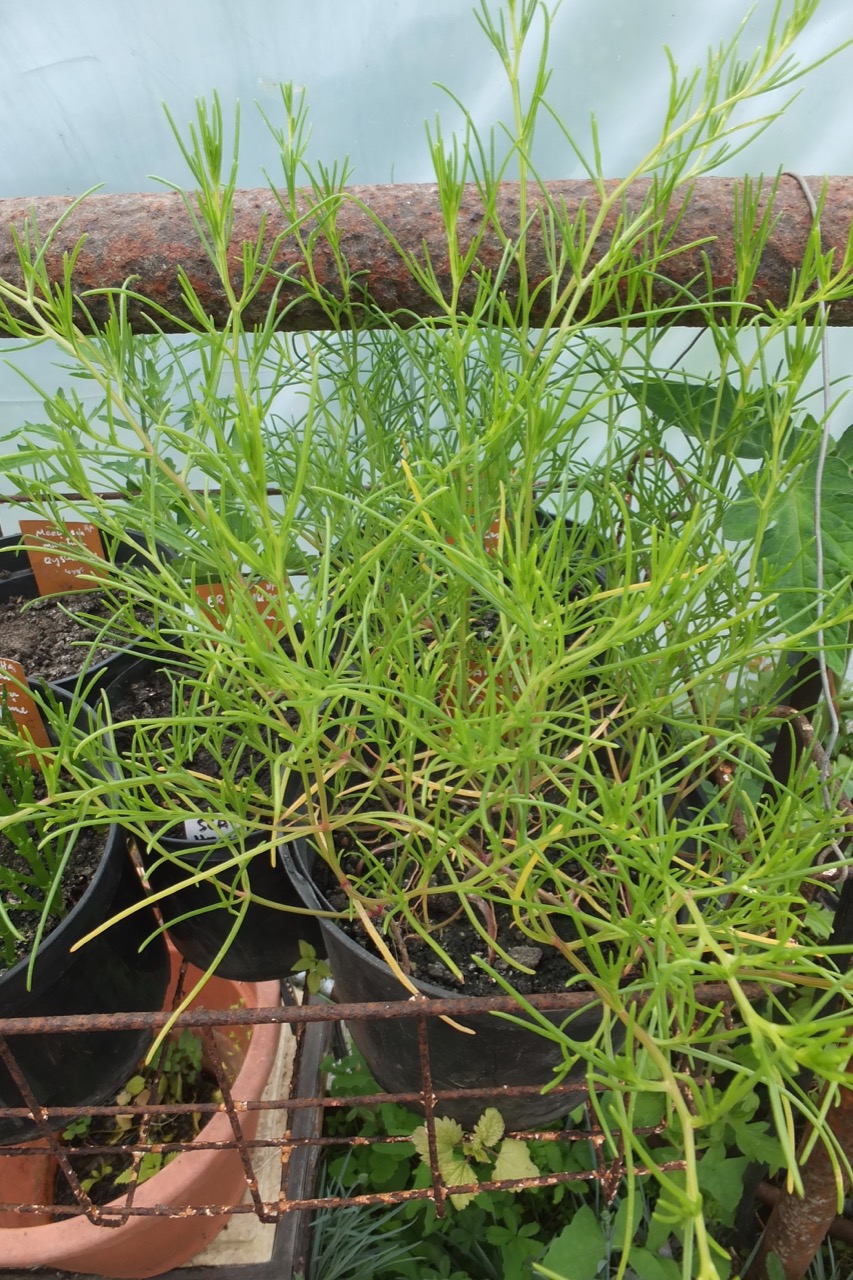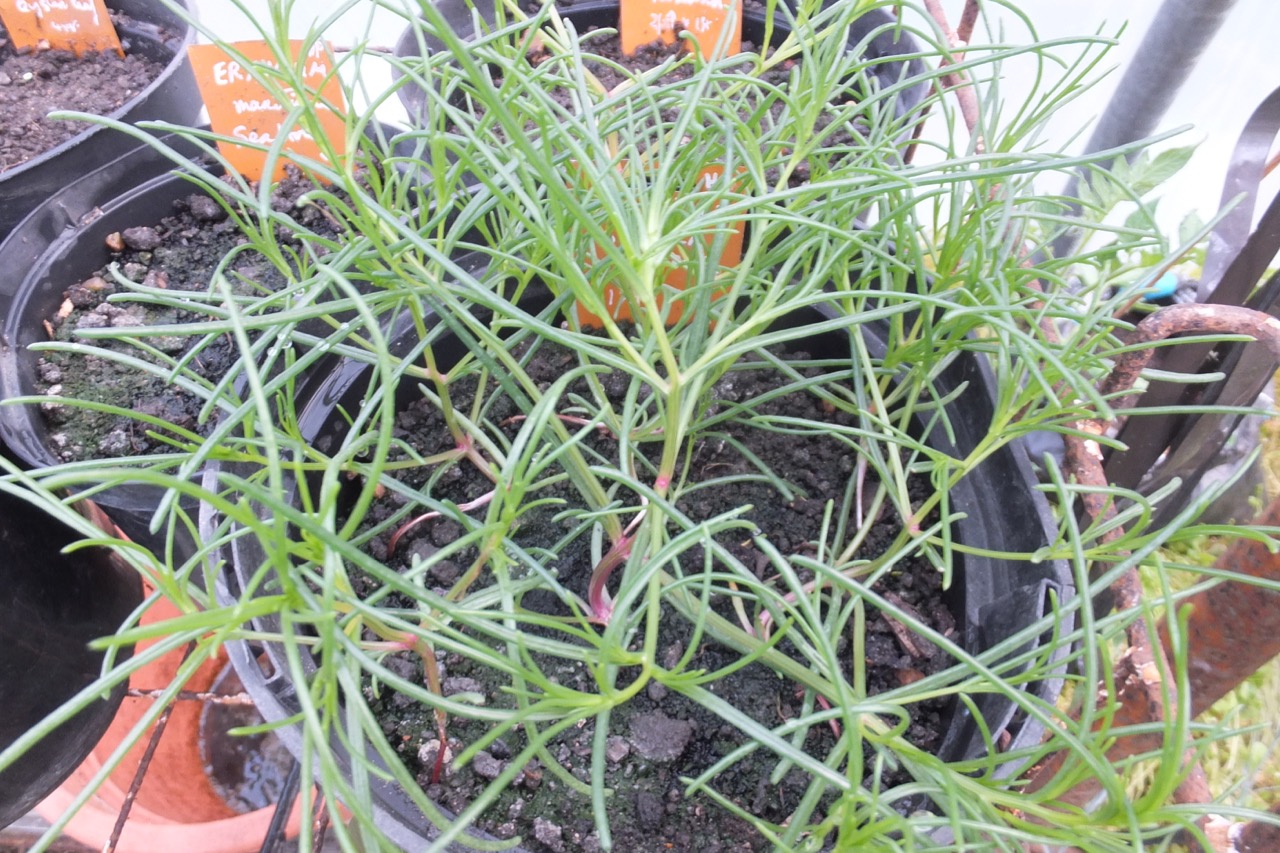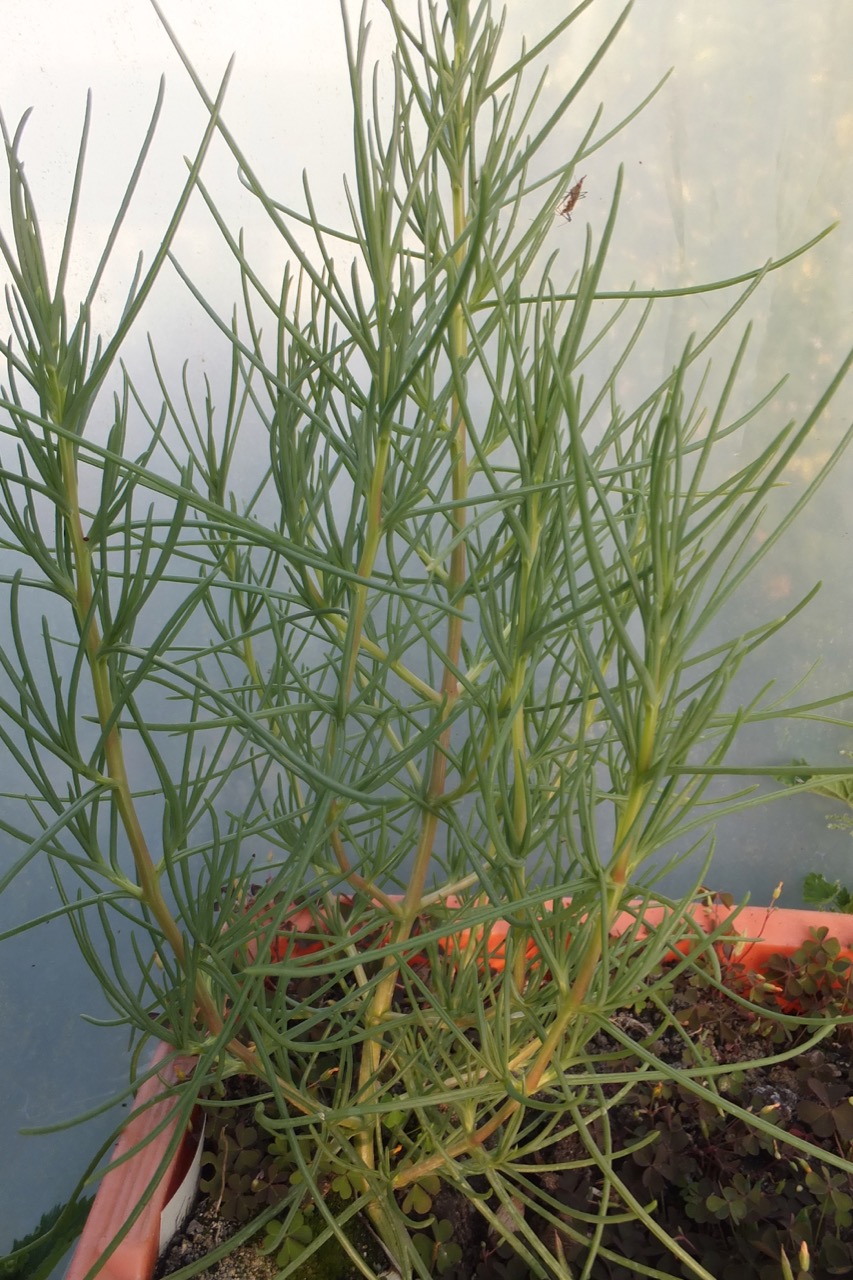
A superbly nutritious greenhouse plant Okahijiki, Salsola komarovii, is one of the oldest Japanese vegetables. Native to saline maritime regions this translates as ‘seaweed on land’ and is distantly related to our Samphire and more closely to our native Prickly Saltwort, Salsola soda, both of which are rich in Elements needed for out nutrition.
Salsola soda, also known as Agretti or Roscano has long been used as a salad condiment for its crisp saltiness. However as the name suggests this becomes prickly as it gets older so only the younger tender shoots are picked. If this plant is allowed to mature it becomes very rich in Soda and used to be burnt to make Barilla, needed for making glass.

Salsola komarovii, Okahijiki, is much neater with a more delicious flavour and no prickles meaning it remains usefully pickable for longer- though likewise younger shoots remain the finest. It is also more compact at half the size of soda only reaching about a foot high and across (30cm each way), indeed several can be grown in a seed tray whereas the larger soda really needs its own pots.

With either pick small shoots from as soon as the seedlings are large enough, continue taking the youngest shoots until the plants flower then discard. Eat with salads or other courses, it goes particularly well with seafood. You can eat these shoots raw or lightly cooked, or even pickled for winter use. (I usually fry the shoots for a few seconds in butter or olive oil, not longer or they shrivel.)

Either of these are easily grown from seed sown in spring in a sandy gritty compost, Okahijiki will germinate better given the warmth of a propagator. Keep their compost moist and as seaside plants they respond well to a little salt in their water instead of fertiliser. As with Samphire discussed in my last blog these can stand in trays or saucers of salty water completely dissuading slug or snail ingress.
Most fortunately these are not appealing to most of our greenhouse pests so are remarkably trouble free crops though as plants mature and become tough it pays to start new batches every fortnight or so from the start of the season.


